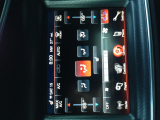6.0
fairly significant- Typical Repair Cost:
- $80
- Average Mileage:
- 21,500 miles
- Total Complaints:
- 2 complaints
Most common solutions:
- replaced humidity sensor. used next model year's part (1 reports)
- unable to fix (1 reports)
This problem may be covered under warranty. Ask your Dodge dealer.
I'm just going to add a copy of my last email below. Bottom line is that after numerous attempts to repair the dealership has been unsuccessful and is now trying to convince me that it's normal operation.
I picked the Charger up today- it was in for two weeks this time. As you know it has been in a number of times for what I was told were minor repairs. In November I left if for 8 days only to find the same issues as before I dropped it off. The same issues that were supposed to be repaired both before and after the 8 days in November. When I picked it up this time Jeff advised me that the recirculate hadn't even been worked on this time. He said the techs said that is normal operation due to a moisture sensor that controls the recirculate option. I can't believe I'm hearing "that's the way it's supposed to be." I've had lots of cars over the years and know exactly how the recirculate works. For some reason I'm supposed to believe that this car works different than every other car I've had- including the 2013 Dodge Journey I currently have. Also, I was a licensed mechanic previously so I know exactly wha I'm talking about.
I can go outside right now and start the car and turn on the recirculate and it will work until the car runs out of gas. The problem is when I go down the road. At some point it shuts off ( and doesn't come back on as the service report states) when it shuts off the car blows cold air in every position and at every temperature setting (not normal). After a while the air turns warm again and the recirculate can be used again ( could be a mile or could be 5 miles) and then it blows cold again.
Nothing normal about this. Clearly, this along with the other problems indicate some electrical or computer issues.
And then to top it off when I was taking my laptop and other items out to the car after work - I decided to go in through the passengers door to see if it was working properly. When I did I noticed a scrape on the door and when I looked closer I noticed more damage by the leading edge of the door. I just took it to the car wash and tried some polish to see if I could remove the marks. It's too dark to tell what's left so I'll check it tomorrow and let you know. I'm attaching pics of what I found.
The dash is staying down for the time being and I'm not sure about the passenger door or dome light. Only time will tell.
Please advise.
- Jeff A., Muskegon, MI, US






Air re-circulation never worked (The three blinks). Dodge had no idea what was going on.
I figured out it must be the humidity sensor. As my re circulation would only work at night (or when it was cloudy). I couldn't bare the Texas heat anymore so I decided to do some research. It turns out the humidity sensor in some early model years (2011,2012,2013) were bad.
Ordering a new sensor with the same part number wouldn't fix anything. The part number for my 2013 is 55111389AD (which can be ordered through the mopar site). However the 2014 model year part number is 55111389AF. (my assumption is the the last letters indicate the revisions they've had to go through with these sensors). Ordered and replaced it with the 2014 year part number and now my re-circulation has been working for over 6 months.
Here's the fix. The sensor has a base (bracket) mounted to the top of the windshield in front of the rear-view mirror. There is a removable cover. Once the cover is removed the sensor can be removed. Use care not to remove the base that is attached to the windshield which can break and you may have to replace if your not careful.
Recommended removal procedure: Disconnect and isolate the negative battery cable Carefully disengage the four retaining tabs that secure the cover to the humidity sensor bracket ... by pressing in on the right side of the cover while rocking the left side of the cover off the bracket. Using a small screwdriver or similar tool, carefully disengage the metal retaining clip from the sensor bracket. Remove the humidity sensor and the clip as an assembly. (this is part that you saw in the photos) Disconnect the wire harness connector from the humidity sensor.
Installation of the new humidity sensor is the reverse of the above removal procedure. This should take less than 15 minutes.
- ks770tx, Plano, TX, US